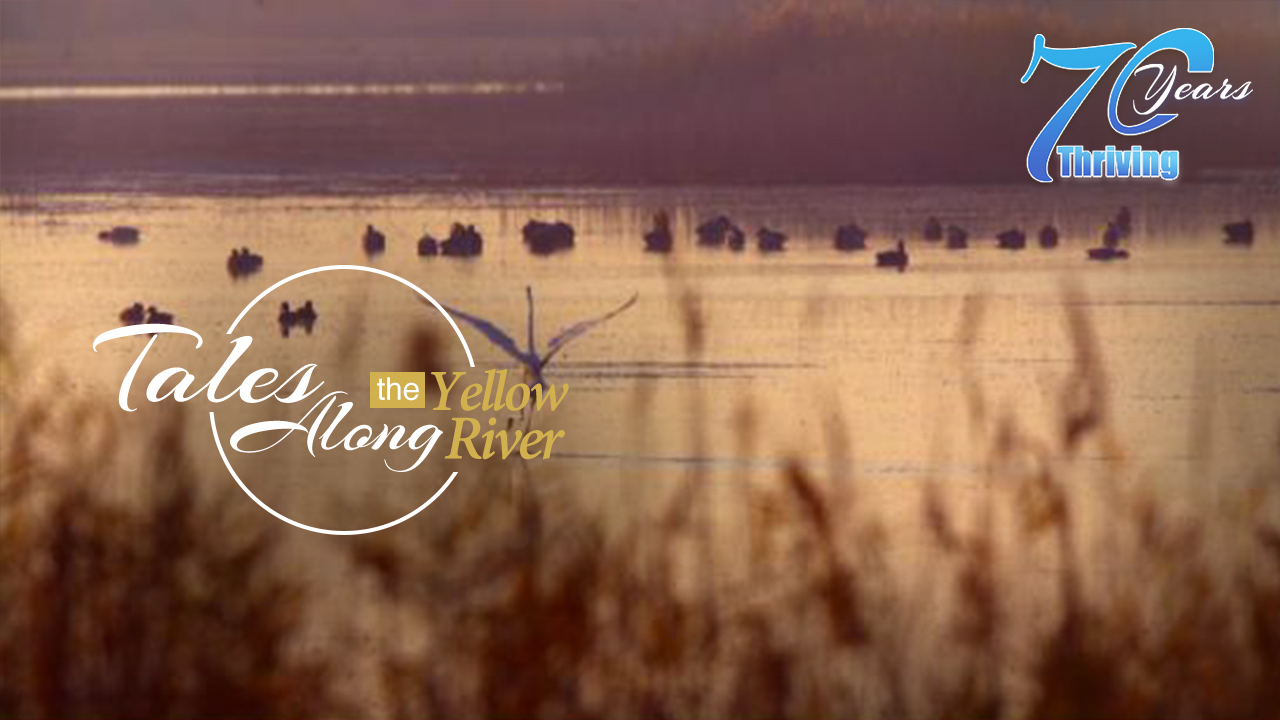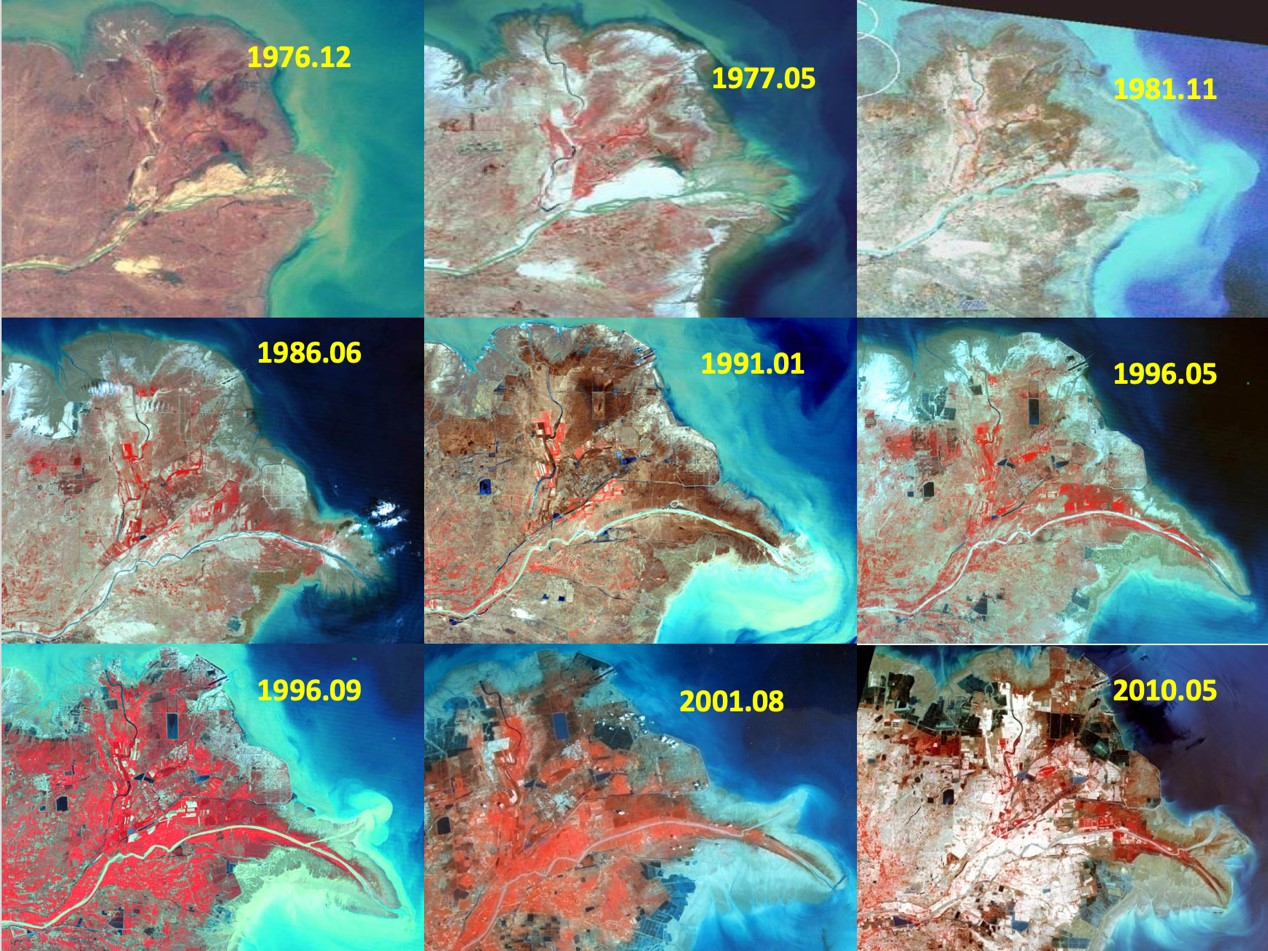

When the Yellow River flushes sand into the ocean in Dongying, the sand divides the water into yellow and blue, creating a scene that stretches to the skyline.
The special landform materializes simply from the river flowing into the sea, providing a home to more than 300 bird species. The Yellow River delta sits on two bird migration corridors, the central Pacific flyway and Asian-Australasian flyway.
"We have provided the migrating birds a stable and fine environment. It's a big deal to bird protection globally," said Zhao Yajie, a senior engineer at the Yellow River Delta National Nature Reserve.
Satellite images showed that sediment flushed out by the river creates about 4.4 square kilometers of new land per year. But the alluvial plain can't provide an ideal living environment for all species.

Satellite shows newly-formed wetland stacked by mud and sand from the Yellow River. / Courtesy of Zhao Yajie
Ecological protection has been underway in the area to create multiple landforms for the sake of biodiversity.
"We constructed some high and low hills, some islands. There are deep water zones and shallow zones. This is a practice of the edge effect. Usually you'll find more diversified species on the edge or at the intersection of two landforms," said Zhu Shuyu, another senior engineer at the reserve.
Due to sea water intrusion, the salted wetland at the river estuary was a threat to certain water organisms and plants. The nature reserve conducted research to prevent soil salinization.
In the future, more work should be done on wetland restoration and ecological compensation, Zhao said.
The wetland reserve also developed its tourism industry developed its tourism industry, calling for public awareness on environmental protection.
(Meng Mingwei also contributed to the story.)

Copyright © 2018 CGTN. Beijing ICP prepared NO.16065310-3
Copyright © 2018 CGTN. Beijing ICP prepared NO.16065310-3